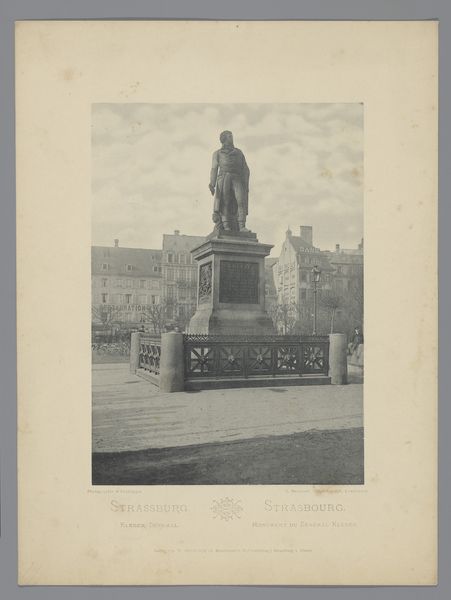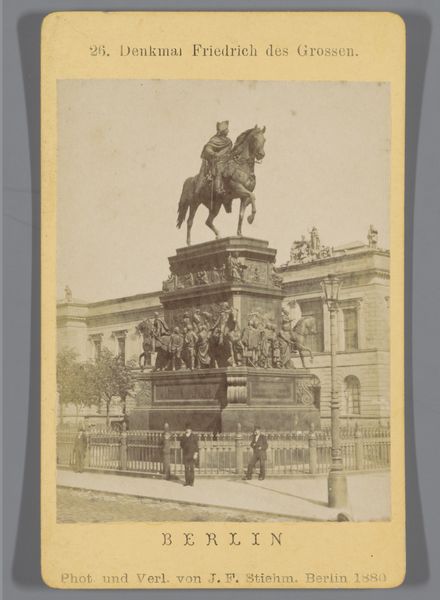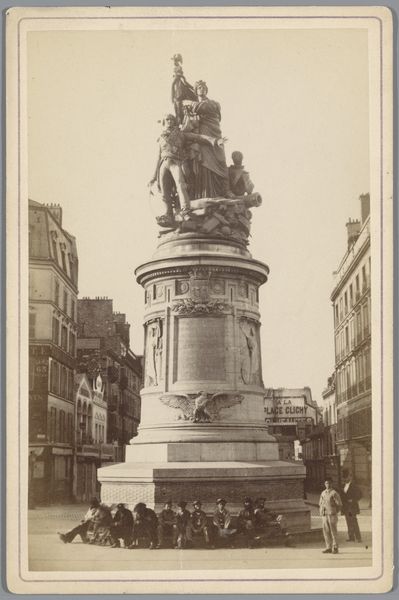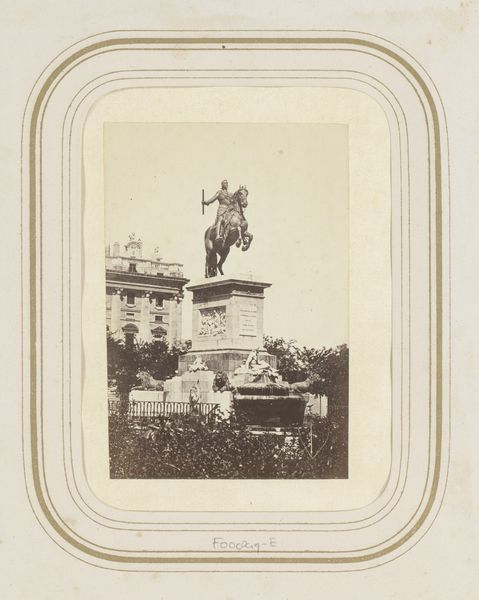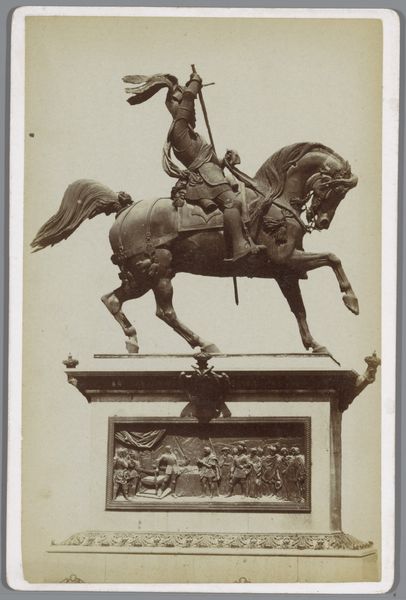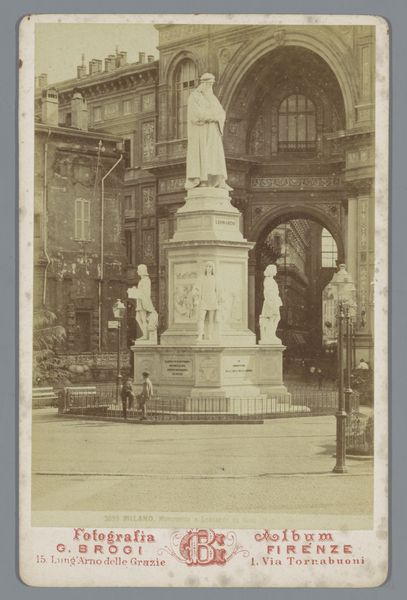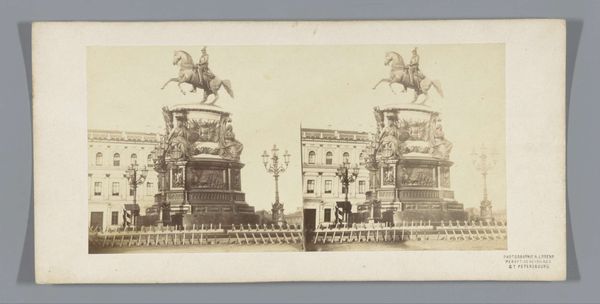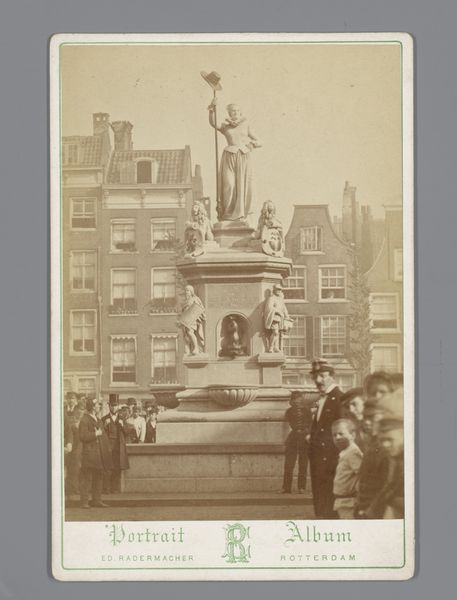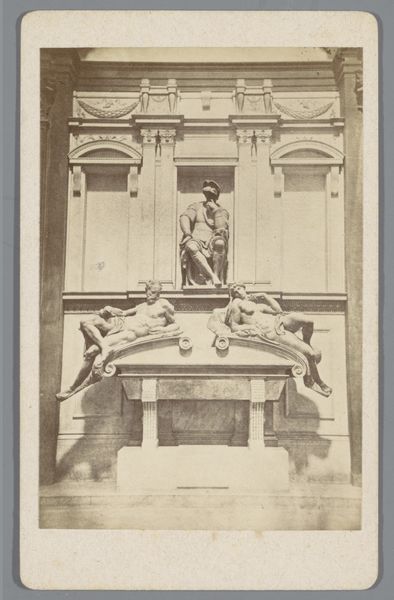
print, bronze, public-art, photography, sculpture
#
portrait
# print
#
landscape
#
classical-realism
#
bronze
#
public-art
#
photography
#
sculpture
#
cityscape
#
realism
Dimensions: height 165 mm, width 108 mm
Copyright: Rijks Museum: Open Domain
Curator: This photograph, taken around 1970 by M.M. Couvee, depicts the statue of William of Orange in The Hague. It’s currently part of the Rijksmuseum collection. Editor: The statue has an immediate impression of solemnity. The grainy texture and sepia tone lends a dignified if somewhat somber atmosphere, doesn't it? There is almost something haunted to it. Curator: Absolutely. Images of public monuments are never neutral, especially in photography from this era, capturing that traditional form of memorializing historical figures. Statues are intentionally designed to inspire, commemorate, and solidify certain narratives in collective memory. Editor: And this monument clearly follows that intent. William, or rather Willem van Oranje here is poised confidently on his horse, every detail, from the elaborate costume to the steed's posture screams power and leadership. Curator: Right. His role in the Dutch Revolt against Spanish rule is core to the Dutch national identity, and placing him on horseback like this amplifies a sense of his heroic stature. Look, too, at the architecture surrounding the statue – buildings suggestive of state authority underscore that positioning. Editor: I’m particularly drawn to the shields and heraldic elements emblazoned on the statue’s pedestal. What do they signify in this visual program? Curator: The shields would allude to Orange's lineage, tying him back to centuries of noble heritage and lending weight to his authority as a leader. Visual rhetoric of nation-building from this period almost invariably tied figures like Orange to broader symbolic lineage to root them to a collective consciousness. Editor: The city behind looms quietly behind like some Greek chorus – this really cements the integration of the monument into the cityscape and its civic identity. The presence of an unknown figure below reinforces both the physical monumentality and his distance to us through history. It's so clever! Curator: I think this photography also highlights how public sculpture operates within the social space, constantly communicating political, historical, and cultural meanings. It calls us to revisit these narratives constantly through its display. Editor: Indeed, reflecting on this, the statue transforms into more than just metal and stone; it becomes a vessel filled with memory, carefully molded for both us, and the generations that come.
Comments
No comments
Be the first to comment and join the conversation on the ultimate creative platform.


